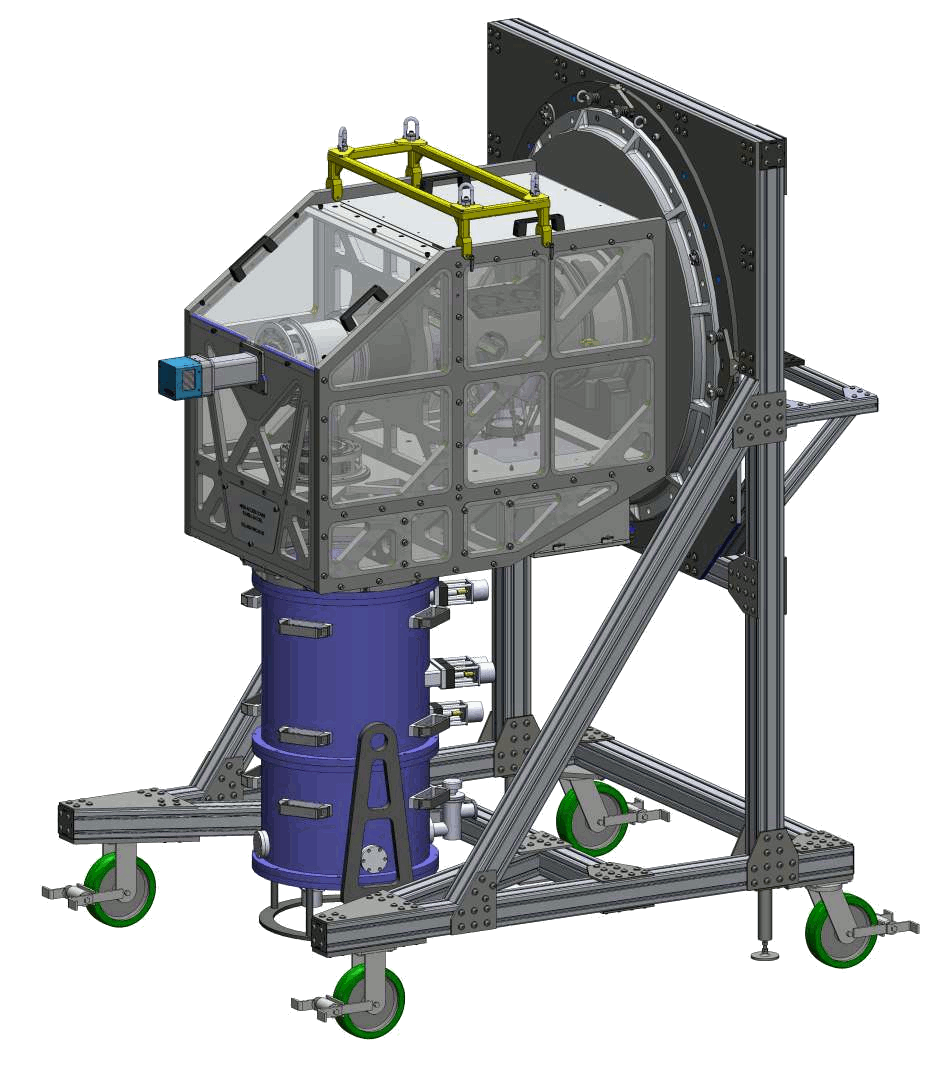NESSI
NESSI
has a new home as of 2 years ago (2018) -- it now operates at the
Palomar Observatories 5.0m Hale telescope. We have optimized and
updated many parts of the NESSI system for the relocation to the prime
focus cage on the Hale. This required a visit back to Universal
Cryogenics to refubrbish and strengthen some of the mechanisms for the
new home. The new NESSI team consists of: Rob Zellem (JPL), Kyle
Pearson (U of A), and Mark Swain (JPL) -- one of the original
NESSI-Co-I's. Colby Jurgenson (OSU) and Luke Schmidt (TAMU)
continue to collaborate from new institutions, as well as Andres
Olivares and Chris Salcido at MROI. We are hoping to complete a
few last upgrades this year to NESSI to give it a permanent home at the
Hale.
We were originally funded (9/09) at NMT to build a multi-object NIR spectrometer
to be used at the Magdalena Ridge Observatory 2.4m Telescope.
The NESSI project's funding came from a combination of MRO's PI, Van Romero, Vice-president of Research
and Economic Development at NMT and NASA EPSCoR
in NM at NMSU. We completed our Final Design Review with our JPL
Collaborators in July, 2011 and have finished final assembly,
integration and verification in the lab. NESSI was originally deployed and had first light at Magdalena Ridge in 2014.
Press
JPL has developed a couple of Press Releases about NESSI on the Hale, written by the JPL lead storyteller, Liz Landau. See here:https://www.jpl.nasa.gov/news/news.php?feature=7581
https://www.jpl.nasa.gov/news/news.php?feature=7582
KRQE recently did a feature on NESSI, NM Tech Exoplanet Search: Is Earth Alone?.
New Mexico Tech press release, New Exoplanet Instrument Achieves First Light!.
Timeline to Date
NESSI's
informal design started in Feb. 2009 shortly before submitting our
proposal to NASA. Since funding started in Sept. 2009 the optical and
mechanical design teams were assembled and NESSI had a CoDR at JPL in
March, 2010 and FDR at NMT in July, 2011. The majority of the NESSI
structure was fabricated in 2012 and 1st half of 2013, including optics
(from ISP, Rocky Mountain, Optical Surfaces, Rainbow Optical and
Richardson Grating Labs), cryostat (from UCryo), mechanical structure
(from ProFab and JW Industries) and a science grade Hawaii 2RG array
(from Teledyne) with electronics (from ARC/Bob Leach in San Diego). We
have achieved first light with a successful engineering run March 30 -
April 4, 2014 at MRO's 2.4m telescope.
After a somewhat successful initial run at the MRO, the NESSI team
determined that continued operations there was infeasible and started
to look for a new home. A pitch was made in 2015 to scientists at
JPL and Caltech to determine if there would be interest in using NESSI
under our JPL coallborator's access to the Hale. Being given a
green light to proceed, we initiated a long-term loan and secured funds
from JPL to retrofit NESSI for the new home at the Hale. This
work began in late 2016 and included 2 trips from NESSI -- one to
Universal Cryogenics in Tucson to change the internal cryogenic
plumbing and reinforce many of the mechanisms as NESSI was changing
from an "uplooker" at MRO to a "downlooker" at the Hale. The
second trip in May 2017 was to JPL for final integration and testing
before transporting to the Hale. NESSI arrived at the Hale in
Jan, 2018 and had first light Feb 2, 2018 within about 90 minutes of
sunset. We have had several runs (with variable weather,
unfortuantely) over the past 24 months, but have managed to secure
several photometric and a few spectroscopic transits of some of the
astronomical community's favorite exoplanets. We are working on
improving noise performance and systematics, and expect to be able to
publish NESSI data in the newar future.

